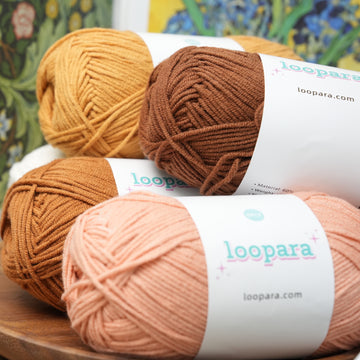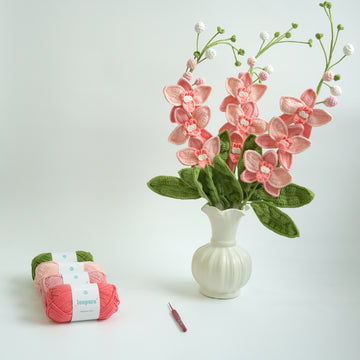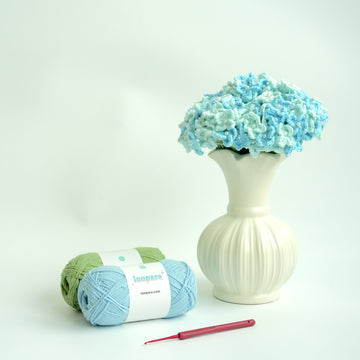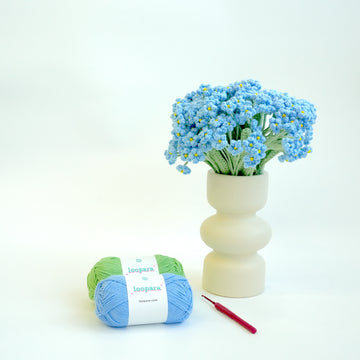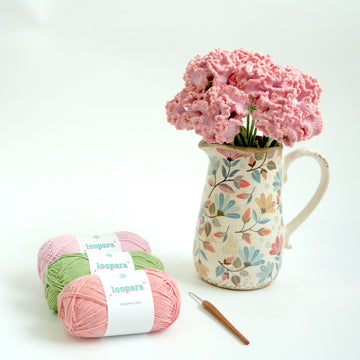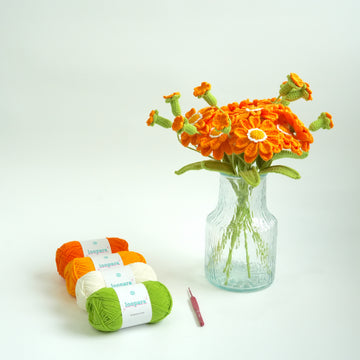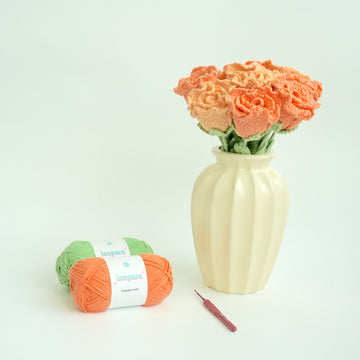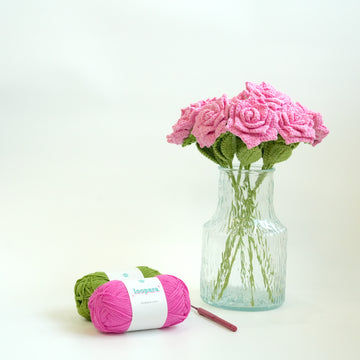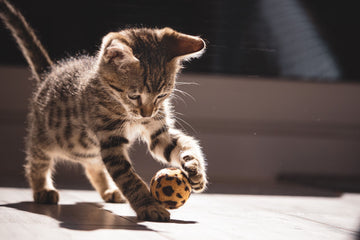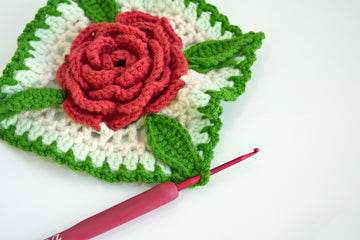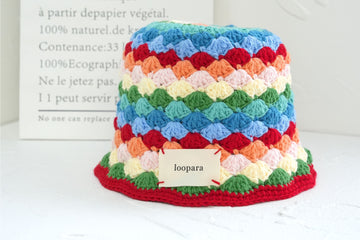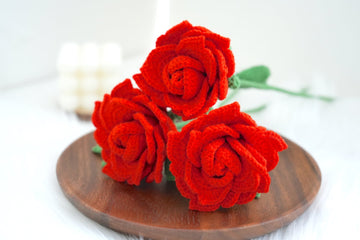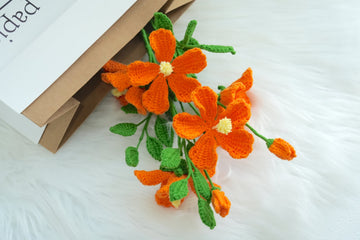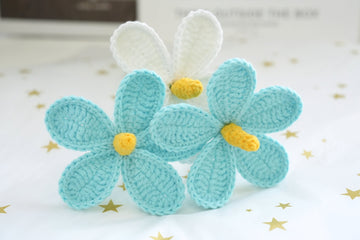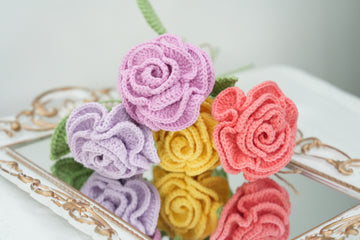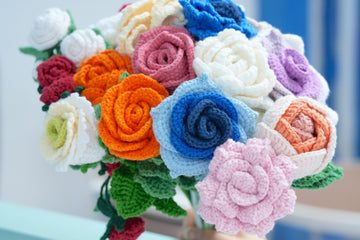You’ve finally finished your beautiful crochet blanket – but it’s curling up at the edges. If that’s your experience, you’re not alone! And if you’re asking yourself, “Why is my crochet curling?” you’ve come to the right place.
In most cases, the reason for curling crochet boils down to your tension being too tight. But there are other possibilities too.
We’re going to explore all the different reasons for the Curse of the Crochet Curl. We’ll explain why it happens and what you can do to prevent it. And we’ll take a look at some quick fixes to make your crochet item flat again.
Ready to learn more? Let’s get started!
Why is My Crochet Curling?
There can be a number of different reasons for curling crochet:
- Too tight tension
- A foundation chain that’s too tightly stitched
- A crochet hook that’s too small
- The wrong yarn
- Not enough stitches in a round or row
- The type of stitches.
Let’s take a look at each of them in turn.
1. Tension that’s too tight
The tension in your stitches is created by the way you hold the yarn as you crochet. If you pull the yarn too tightly, you’ll end up with tight tension. So why does that matter?
Well, the stitches will pull on each other, drawing the edges of the fabric up in that annoying curl. It will also create a fabric that’s quite stiff – not ideal if you’re making something like a blanket.
2. A foundation chain that’s stitched too tightly
Most crochet projects start with a row of chain stitches from which the other crochet stitches hang. This is often referred to as the foundation chain.
If the foundation chain is too tight to start with, everything else will follow. That will give you the same issues as with a tension that’s too tight. The stitches will pull against each other, causing the edges of the fabric to curl up.
3. Your crochet hook is too small
Different yarns work better with different sized crochet hooks. And if your hook is too small for the yarn you’re using, you’ll end up with stitches that are too tight.
You might be thinking that this can’t be the issue, because you’re following a pattern. But remember, the guidance in patterns on hook sizes is just that – guidance.
Take a look at the label of your yarn too, and check the hook you’re using is within the recommended range.
4. Unsuitable yarn
Swapping out the yarn in a pattern for something different can be a fun way to give projects your own unique flavor. But if the yarn doesn’t work with the pattern, it can give rise to the dreaded curl.
Even yarn the same weight as specified in the pattern can cause problems. That’s because each yarn weight covers a range of different thicknesses. If the yarn specified by the designer was at the lower end of the range and yours is right at the top, the extra thickness might be the culprit.
The thicker yarn could mean that you’re not getting the right number of stitches in each row. And that can leave you with curling fabric.
5. Not enough stitches in a round or row
If you’ve miscounted your stitches, you might end up with an unplanned decrease. That simply means that there aren’t enough stitches in the row or round.
That, in turn, means that the fabric is getting shorter, pulling on the stitches in the row or round above. It’s that pulling effect that’s creating the curl.
6. The type of stitches
If you’ve considered all other possibilities and none explain the curling, it might simply be the result of the stitches you’re using. The shape of some stitches naturally creates a curve. Examples include single crochet, Tunisian simple stitch, and Tunisian knit stitch.
If you want to use those stitches but don’t want your fabric to curl, there are things you can do. Combining curling with non-curling stitches will reduce their effect. Or you could deal with the curl after you’ve finished crocheting your item.
Also Reas: 44 Different Types Of Crochet Stitches

How to stop your crochet curling – before the piece is finished
You may notice your fabric has a curl well before you’ve finished making the article. Sometimes the first couple of rows will curl, but the fabric will flatten out as you get further along. But if the problem isn’t going away, there are things you can do before you get to the end.
The right solution will depend on what’s causing the curling. Let’s look at the approaches you can try.
1. Adjust your tension
If you notice your crochet is starting to curl, it might be because your tension is too tight. Loosening your grip on the yarn will help. And make sure you unravel your skein of yarn as you go – if it’s coming straight off the skein into the fabric, the tension may be too tight.
It’s a good idea to make a gauge swatch before you get started on a new project. That will allow you to test the tension alongside your choice of hook and yarn. And it means you’ll be able to identify any issues with curl at the outset.
2. Swap to a larger crochet hook
A hook that’s too small for your yarn can result in stitches that are too tight, causing curling. Swapping it for a larger hook can solve the problem. And if you’re not too far into your project, you’ll probably be able to do it without the difference being too visible in the finished fabric.
3. Use a large hook for your foundation chain
A foundation chain that’s too tight will leave your fabric prone to curling from the beginning.
One easy way to reduce the chances of this happening is to use a larger hook for the foundation chain. If you’re using a pattern, we’d suggest a hook one or even two sizes larger than specified there. You can then swap to a smaller hook for the rest of your piece.
4. Give your fabric a tug
Sometimes a sharp tug on the fabric is all that’s needed to straighten out a curl. If you’re crocheting a stitch with a natural tendency to curl – like single crochet or Tunisian knit – you may need to keep tugging every so often as you work.
If you’re doing that and the fabric is still curling, don’t lose heart. There are other steps you can take to flatten it out when you’ve finished crocheting.
5. Rip out some stitches
This might be painful, but ripping out some stitches (known as frogging) is sometimes the only way to correct a curl. If you’re working in the round, for example, and have decreased without meaning to, the only way to correct it is by taking out the decrease.
It’s the same story with a foundation chain that’s too tight. If the rest of your rows are wider, the edges of your fabric are going to curl. And the only way to deal with that is by starting over.
If that’s what needs to happen, don’t despair! The work you’ve done isn’t wasted because it’s an experience you can learn from.
And starting again can be more effective, and may even be quicker, than trying to put right a stubborn curl at the end.

Uncurling a finished crochet fabric
If you’ve reached the end of your project and your fabric is still curling, there are a number of ways to flatten it out.
1. Blocking
Blocking is a process specifically designed to stop crochet fabric from curling.
The key is to position your fabric into the right shape, then place heavy weights on top. Lightly spraying the fabric with water before adding the weights will be even more effective. In some cases, you may need to pin the fabric to hold it in position.
Blocking is most effective when the curl in the fabric isn’t too severe. (You can find our detailed guide to blocking here.)
2. Adding a border
Making a border adds extra weight to the edges of the fabric. It can be an effective way of removing a curl, but you will need to ensure it has enough stitches. If it doesn’t, it can actually make the curl worse.
Some stitch types will make a border more effective at reducing curl than others. Reverse single crochet stitches are particularly good, and slip stitch works well too.
3. Adding trims
Adding a trim to your fabric can also help deal with curling fabric by adding weight to the edges. Pompoms look great with crochet, as do beads, fringing or tassels.
It’s a good way of handling the curl without changing the pattern of your piece.
Why is my crochet curling? A quickfire summary
If your crochet is curling, it’s probably because the stitches are pulling inwards. That could be because your tension is too high or your stitches are too small. Loosening your tension, using a larger crochet hook, changing the yarn, or adding more stitches to rows or rounds can all help.
Some stitches will introduce a curl to the fabric, no matter what the tension or hook size. Blocking, or adding borders or trims to the finished piece, can help flatten out those edges.


